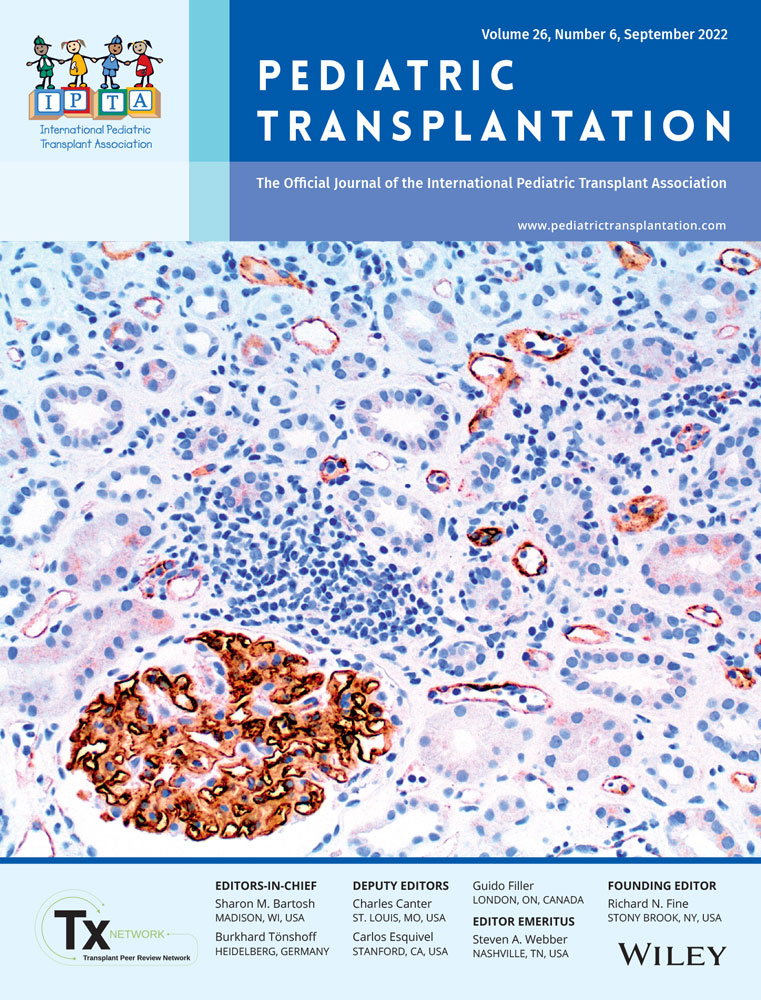Good outcomes after pediatric intraperitoneal kidney transplant
Elizabeth A. Gerzina and Eileen D. Brewer contributed equally to the preparation of this manuscript as co-first authors.
Abstract
Background
Kidney transplantation in small children is technically challenging. Consideration of whether to use intraperitoneal versus extraperitoneal placement of the graft depends on patient size, clinical history, anatomy, and surgical preference. We report a large single-center experience of intraperitoneal kidney transplantation and their outcomes.
Methods
We conducted a retrospective review of pediatric patients who underwent kidney transplantation from April 2011 to March 2018 at a single large volume center. We identified those with intraperitoneal placement and assessed their outcomes, including graft and patient survival, rejection episodes, and surgical or non-surgical complications.
Results
Forty-six of 168 pediatric kidney transplants (27%) were placed intraperitoneally in children mean age 5.5 ± 2.3 years (range 1.6–10 years) with median body weight 18.2 ± 5 kg (range 11.4–28.6 kg) during the study period. Two patients (4%) had vascular complications; 10 (22%) had urologic complications requiring intervention; all retained graft function. Thirteen patients (28%) had prolonged post-operative ileus. Eight (17%) patients had rejection episodes ≤6 months post-transplant. Only one case resulted in graft loss and was associated with recurrent focal segmental glomerular sclerosis (FSGS). Two patients (4%) had chronic rejection and subsequent graft loss by 5-year follow-up. At 7-year follow-up, graft survival was 93% and patient survival was 98%.
Conclusions
The intraperitoneal approach offers access to the great vessels, which allows greater inflow and outflow and more abdominal capacity for an adult donor kidney, which is beneficial in very small patients. Risk of graft failure and surgical complications were not increased when compared to other published data on pediatric kidney transplants.
CONFLICT OF INTEREST
The listed authors of this manuscript have no conflicts of interest to disclose.
Open Research
DATA AVAILABILITY STATEMENT
The derived data supporting the findings of this study are available from the corresponding author on request.




